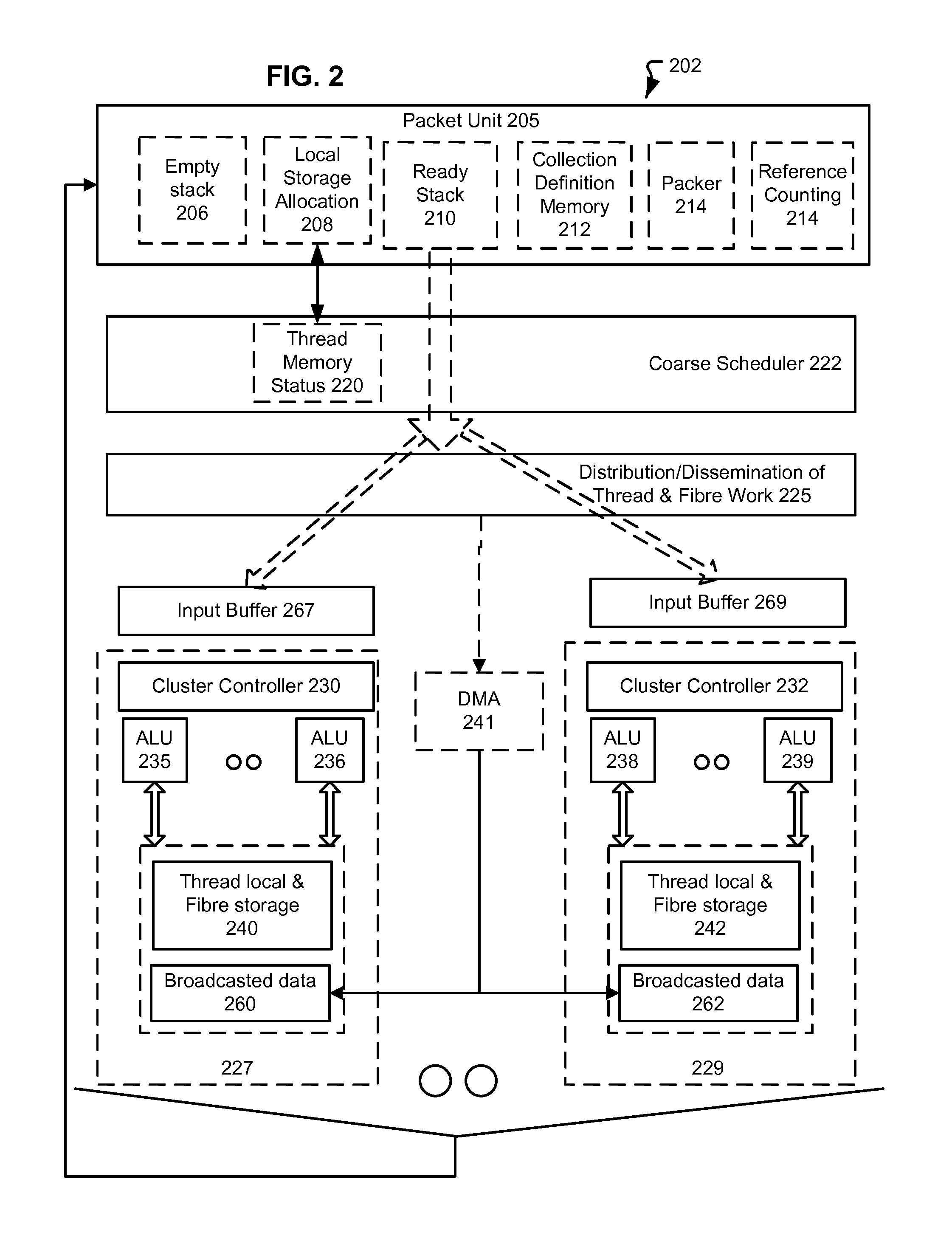Graphics processor with non-blocking concurrent architecture
a graphics processor and concurrent architecture technology, applied in the field of graphics processing, can solve the problems of reducing the benefit of thread parallelism, adding additional layers of complexity to reduce blocking, and increasing the weight of the process, so as to reduce the effect of reducing the burden on the kernel, and reducing the performance cos
- Summary
- Abstract
- Description
- Claims
- Application Information
AI Technical Summary
Problems solved by technology
Method used
Image
Examples
Embodiment Construction
[0045]One reason that parallelism does not scale in accordance with computation resource availability is that memory bandwidth is not scaling in proportion to the available computation capability. Therefore, computational problems that do not enjoy inherent data locality can cause the computation elements to wait on data being accessed from memory. Memory access remains a problem even as peak theoretically available memory bandwidth has gone up, because such peak bandwidths assume burst transfer rates that often are unrealistic for these kinds of computation problems. Further, scalability of memory interface performance is hindered by other factors, such as pin count of the memory interface, and the fact that memory access latency does not readily scale with process technology changes. For example, DDR3 Column Address Strobe (CAS) latency can be around 9ns, while typical DDR2 CAS latency is around 10ns. Also, memory latency between processing nodes also may be a factor in different ...
PUM
 Login to view more
Login to view more Abstract
Description
Claims
Application Information
 Login to view more
Login to view more - R&D Engineer
- R&D Manager
- IP Professional
- Industry Leading Data Capabilities
- Powerful AI technology
- Patent DNA Extraction
Browse by: Latest US Patents, China's latest patents, Technical Efficacy Thesaurus, Application Domain, Technology Topic.
© 2024 PatSnap. All rights reserved.Legal|Privacy policy|Modern Slavery Act Transparency Statement|Sitemap



